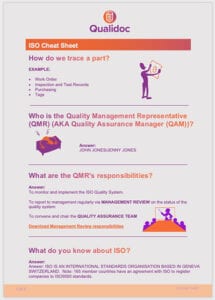QUALITY, LIKE BEAUTY, IS IN THE EYE OF THE BEHOLDER
Many years ago I visited a small company which was the sole-source subcontractor for a critical military winter item. As I chatted with them about their business, I asked how they recorded their nonconformances. The Managing Director waved towards a couple of sad-looking photographs of welds on the wall, one marked ‘Before’ and one ‘After’. I asked the usual questions about qualification to Welding Board standards and he observed that “our employees are trained on the job and they {the products} meet customer requirements”. Then I asked him how they managed Process Control, which comprised manufacturing the items in one piece, after which they were painted. He said they hired local people to use them as seats on the beach for a specified time. If the paint wore off before that time expired (presumably where Inspection and Test came in) they were perceived as ‘nonconforming’. (I swear this is a true story.)
The product met their customers’ specifications. They had good contracts and obviously their customers (exacting military) were happy with the results.
I make this point because with the current passion for data collection and numbers we are inclined to forget the judgement of experienced people who are responsible for determining the acceptable level of quality for products and services in their own environment. They are also responsible for training the apprentices and other novices coming into the industry. The numbers mean nothing unless they derive from well-defined categories of instruction; in other words, vocabulary.
The word “quality” can be attached to an adjective such as “excellent” or “poor”, for example, depending on the perception of the person evaluating the object, service, or other condition. For quality management, however, the word is attached to specific values such as customer requirements, international quality management and industrial standards. In aerospace it might apply to safety and economical performance, rather than luxurious cabin surroundings. In marine freight forwarding it could apply to the condition of pulp and paper travelling from the mills to the rail car and then the ship.
The word “quality” has no meaning used on its own without criteria for acceptance, which must be in the eye of the experienced beholder or decided against a value set within discrete environments.
